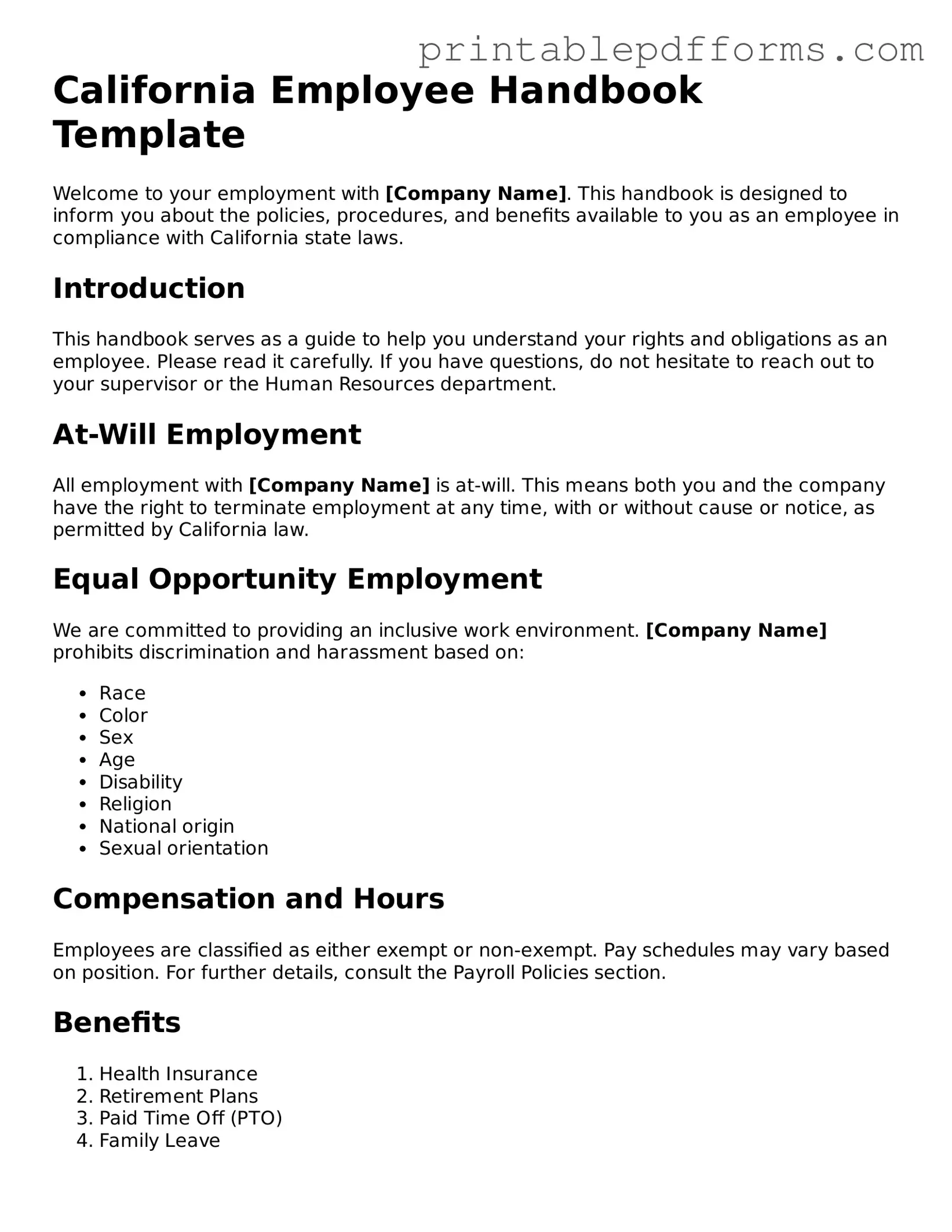California Employee Handbook Template
Welcome to your employment with [Company Name]. This handbook is designed to inform you about the policies, procedures, and benefits available to you as an employee in compliance with California state laws.
Introduction
This handbook serves as a guide to help you understand your rights and obligations as an employee. Please read it carefully. If you have questions, do not hesitate to reach out to your supervisor or the Human Resources department.
At-Will Employment
All employment with [Company Name] is at-will. This means both you and the company have the right to terminate employment at any time, with or without cause or notice, as permitted by California law.
Equal Opportunity Employment
We are committed to providing an inclusive work environment. [Company Name] prohibits discrimination and harassment based on:
- Race
- Color
- Sex
- Age
- Disability
- Religion
- National origin
- Sexual orientation
Compensation and Hours
Employees are classified as either exempt or non-exempt. Pay schedules may vary based on position. For further details, consult the Payroll Policies section.
Benefits
- Health Insurance
- Retirement Plans
- Paid Time Off (PTO)
- Family Leave
Code of Conduct
All employees are expected to adhere to the following standards:
- Act with integrity and respect towards others.
- Maintain confidentiality regarding company information.
- Follow all company policies and procedures.
Employee Responsibilities
As a valued member of the team, it is crucial to abide by your job responsibilities and maintain professionalism. Your efforts contribute to a positive workplace culture.
Health and Safety
We prioritize your health and safety. Adhere to all safety guidelines and immediately report any unsafe conditions or accidents in the workplace.
Contact Information
If you have any questions or need clarification on any policy within this handbook, please contact:
- Human Resources: [HR Contact Information]
- Management: [Management Contact Information]
Thank you for being a part of [Company Name]. We look forward to a successful journey together!
